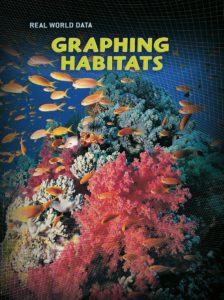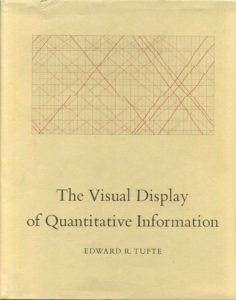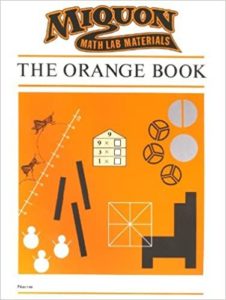 |
Miquon Math is a curriculum for grades 1-3 in six color-coded workbooks, developed in the 1960s by Lore Rasmussen of Pennsylvania’s Miquon School. These are designed to be used with Cuisenaire rods and stress investigation, problem-solving skills, and creativity rather than rote drill. |
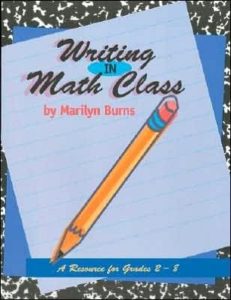 |
By creative math educator Marilyn Burns, Writing in Math Class (Math Solutions, 1996) has many examples of how writing helps kids of all ages learn math. Many suggestions, among them keeping math journals, writing math autobiographies, and combining math with creative writing. Resources for ages 7 and up. |
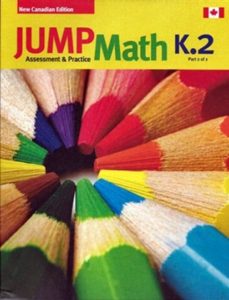 |
JUMP Math was designed by mathematician John Mighton (who almost flunked calculus in college), author of The Myth of Ability: Nurturing Mathematical Talent in Every Child (Walker & Company, 2004). JUMP, which stands for Junior Undiscovered Math Prodigies, is a comprehensive program that integrates games, puzzles, magic tricks, hands-on activities, and extensions. Check out the free samples at the website. For grades K-8. |
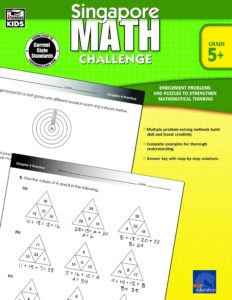 |
Singapore Math, a comprehensive curriculum for grades K-12, progresses from the concrete to the pictorial to the abstract – that is, it emphasizes translating problems into concrete and/or visual images to help younger learners understand concepts. Excellent reviews. |
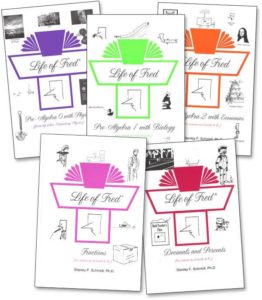 |
Stanley Schmidt’s Life of Fred series offers a complete math curriculum from soup to nuts – or rather, from simple addition to Calculus, Statistics, and Linear Algebra. The books are set up in chapters, each telling a story about Fred, who teaches at KITTENS University. At the end of each story, kids grab a pencil and tackle a number of questions and challenges related to the story. Frequently these involve additional interesting tidbits and facts. The Fred approach is intended to be multifaceted and thought-provoking – the opposite, in other words, of the drill-and-ill approach so often found in school workbooks. Lightly disguised traditional math. |
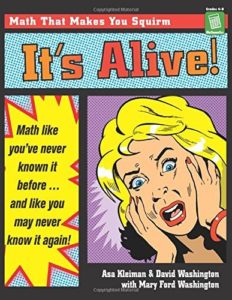 |
By Asa Kleiman, David Washington, and Marya Washington Tyler, It’s Alive! Math That Makes You Squirm (Prufrock Press, 1996) – written by a pair of young computer geeks and a math teacher – is a hoot, crammed with zany problems based on the kinds of quirky facts and gicky trivia that kids adore. For example, readers calculate the number of earthworms in a football field, the probability of being eaten by a salt-water crocodile, the amount of liquid in a giant squid eyeball, the travel rate of eyelash mites, and the storage capacity (in megabytes) of the human brain. There’s a helpful answer key at the back of the book. For ages 9-13. |
| |
A sequel, It’s Alive and Kicking (Prufrock Press, 1996) – subtitled “Math the Way It Ought to Be – Tough, Fun, and a Little Weird” – continues in the same vein, with problems based on sweat glands, rat litters, cow manure, and the number of rivets holding up the Eiffel Tower. |
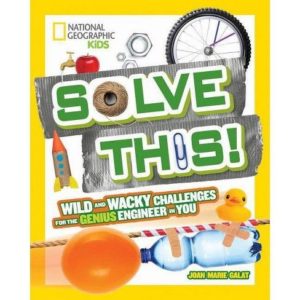 |
Joan Marie Galat’s Solve This! (National Geographic, 2018) is a great collection of wild, wacky, and fun math challenges. (A vulture swoops down and snatches your sister’s teddy, then drops it on the far side of a raging river. What to do?) For ages 8-12. |
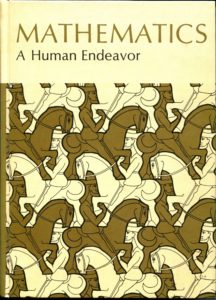 |
By Harold R. Jacobs, Mathematics: A Human Endeavor (W.H. Freeman, 1994) is a ray of light in the grim gray field of textbooks. Math, Jacobs-style, is taught through puzzles, games, experiments, and enthralling real-life examples. Chapter 1, “Mathematical Ways of Thinking,” for example, plunges students into experiments with the behavior of billiard balls, the notorious four-color map problem, and the invention of the Soma cube puzzle. In later sections, readers learn about number sequences with the hexagrams of I Ching and Francis Bacon’s 17th-century diplomatic cipher; are introduced to coordinate graphing with the leaping speed of kangaroos; and learn about logarithms with the electromagnetic spectrum, the frets on a guitar, and the Richter scale. This is real math, and it’s great. Highly recommended for ages 13 and up. |
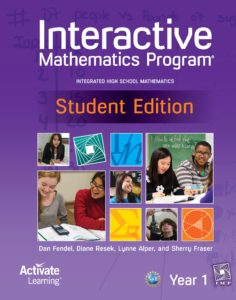 |
The Interactive Mathematics Program (IMP) is an integrated four-year program, intended to replace the traditional math sequence in which kids progress from Algebra I to Geometry, then to Algebra II/ Trigonometry and Pre-calculus. Instead the IMP series teaches algebra, geometry, trigonometry, statistics, and probability in combination, through active investigation of “open-ended situations” – that is, problems without pre-programmed simple answers. In lieu of rote exercises, kids are encouraged to experiment and explore – often with manipulatives, graphing calculators, and computers. For high-school-level students. |
| |
A derivative of IMP called Meaningful Math follows a more traditional format and employs graphing calculators. |
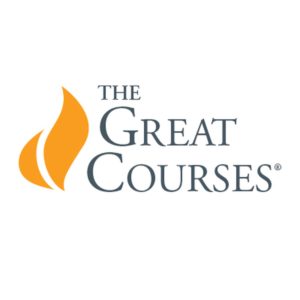 |
The Great Courses are a wide range of classes, variously available on video, DVD, audio CD, or audiocassette, for high-school- and college-level students. Among these is The Joy of Thinking (subtitled “The Beauty and Power of Classical Mathematical Ideas”), a 24-lesson lecture series, jointly taught by professors Edward Burger of Williams College and Michael Starbird of the University of Texas at Austin, whose stated goal is to both introduce some of the truly creative and intriguing ideas behind mathematics and to show students how to develop effective thinking strategies. The result is a wide-ranging discussion of counting, geometry, and probability, using clear and easy-to-follow presentations and lots of catchy examples. There are forays, for example, into Fermat’s Last Theorem, Fibonacci numbers in pineapples, Mobius bands and Klein bottles, Turing machines and Dragon Curves, coin-flipping, coincidences, and the question of whether monkeys, randomly typing, could eventually produce Hamlet. |
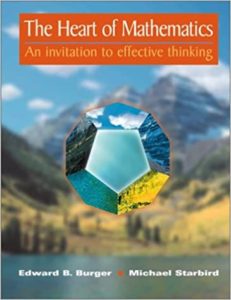 |
Suggested readings for The Joy of Thinking are taken from Burger and Starbird’s The Heart of Mathematics: An Invitation to Effective Thinking (Key College Publishing, 2000), a very readable and attractively designed text reminiscent of Harold Jacobs’s Mathematics: A Human Endeavor (W.H. Freeman, 1994). (See above.) |
| |
Annenberg Learner has some terrific resources for math, among them video courses (many available online for free), lesson plans, and interactives. Video courses include Against All Odds: Inside Statistics, Algebra: In Simplest Terms, and numerous workshops for educators on creative techniques for teaching math. Also at the site are extensive lists of categorized lesson plans (K-2, 3-5, 6-8, 9-12, and college) and a lot of great interactives. For example, kids can experiment with a balance scale, generate graphs, build a number line, manipulate congruent shapes, explore rotational symmetry, and much more. |
| |
MathBits has a wealth of resources for math students, including tutorials on Java and C++ programming, projects and worksheets for the Geometer’s Sketchpad, instructions for finding your way around a graphing calculator, downloadable graph paper (31 kinds), and many Math Caching games at a range of levels, in which kids must solve problems and submit answers in order to discover the next Internet “box.” |
| |
Mathcats is a multifaceted site that lets visitors experiment and explore. Try to solve a logic problem involving Sailor Cat, a goat, a wolf, and a cabbage; find out how old you are in seconds; play with architecture blocks; and use the Math Cats Balance to balance everything from electrons to galaxies. There are also dozen of interactive projects (for example, generate fractal snowflakes and geometric spider webs) and math-based crafts. Aimed at open-ended inquiry learning. |
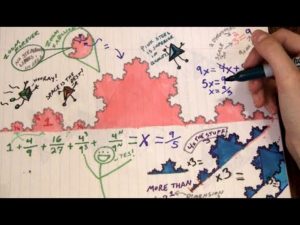
|
Doodling in Math Class is the creation of Vi Hart, mathemusician and employee of Khan Academy. These are a terrific, fun, and irreverent collection of math-and-drawing exercises on such topics as spirals, fractals, Fibonacci numbers, and Sierpinski triangles. I love these. Check them out. |
| |
AAA Math is essentially a gigantic free online workbook, with practice exercises categorized alphabetically by topic from Addition, Algebra, Comparing, and Counting through Ratios, Statistics, and Subtraction. |
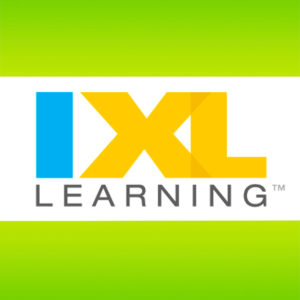 |
IXL Math has a complete list of all the (hundreds of) skills required by the public schools at each grade level, with online practice problems and printable worksheets for each. |
| |
SOSMath is an online workbook with examples and practice problems for high school and college students, variously covering Algebra, Trigonometry, Calculus, Differential Equations, Complex Variables, and Matrix Algebra. |
| |
Free Math – which is free – has detailed lists of all the skills required in public-school math classes, categorized by grade, with associated practice exercises. |
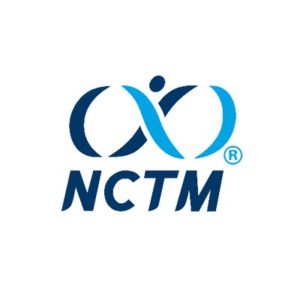 |
The National Council for Teachers of Mathematics (NCTM) website has lesson plans, activities, and resources for students from K-12. Heavy in educationese. |
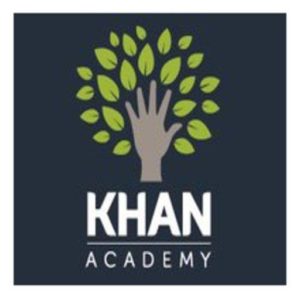 |
For online math classes for grades 3 and up, see Khan Academy. Khan Academy is a non-profit educational website created by Salman Khan (graduate of MIT and Harvard Business School) with the mission of providing a free, world-class education online to anyone, anywhere, anytime. Zillions of exercises, mini-lectures, and tutorials. |
| |
EdX provides free online courses from such colleges and universities as Harvard, MIT, and Stanford in a wide range of disciplines (among them, math). |















